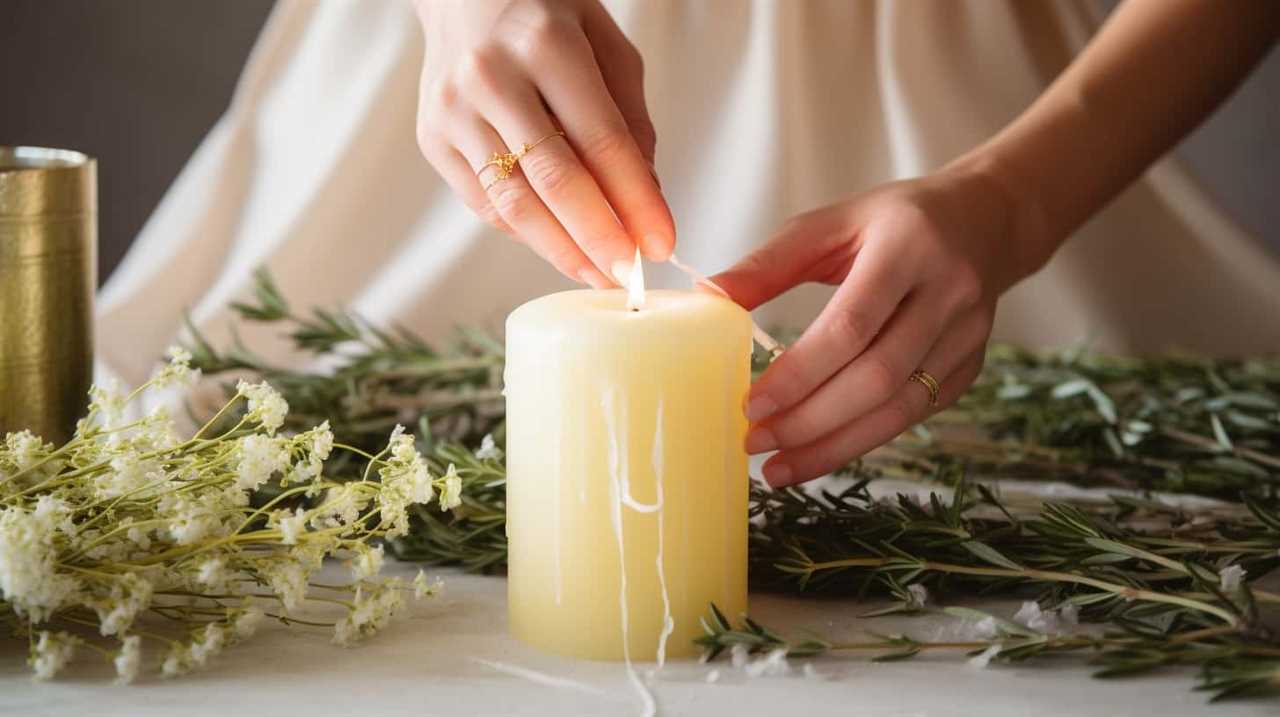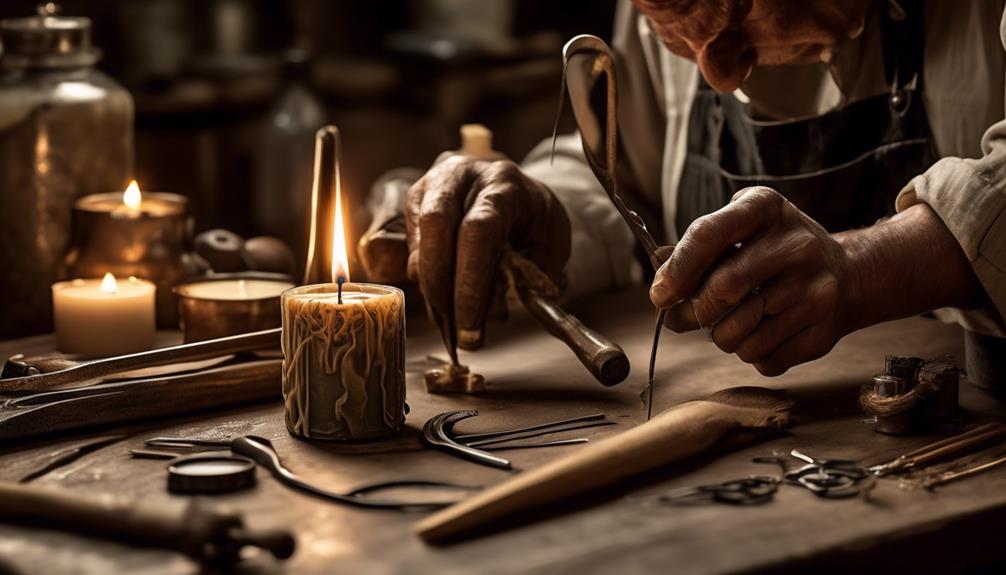Why is it important to trim the wick of a candle?
Well, for those of us who strive to serve others, there are a multitude of reasons to do so. Trimming the wick not only prevents excessive smoke, but also enhances the distribution of that lovely scent we all enjoy.
By doing this simple task, we can extend the burn time of our candles, maintain a desirable flame height, and increase overall candle safety.
Not to mention, it promotes even wax melting and reduces soot build-up, resulting in a cleaner burn.
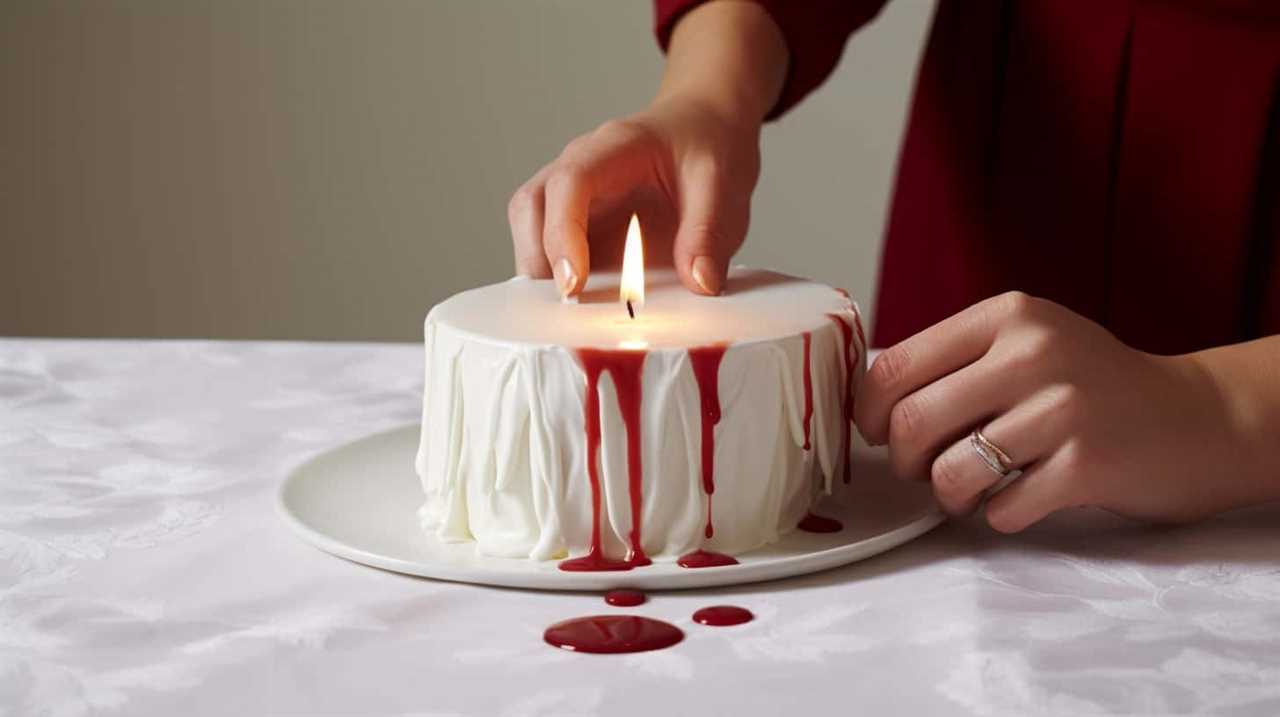
So, let’s grab our trusty wick trimmers and take a few moments to care for our candles. Your nose, your home, and those around you will surely thank you!
Key Takeaways
- Trimming the wick prevents excessive smoke and reduces fire hazards.
- It promotes even melting and prevents tunneling.
- Trimming the wick enhances fragrance distribution throughout the room.
- It increases burning time and extends the lifespan of the candle.
Prevent Excessive Smoke
To prevent excessive smoke, we should cut the wick of a candle before lighting it. This simple step can make a significant difference in improving the performance of the candle and preventing wax drips.
When a candle is lit with a long wick, it tends to produce more smoke, which can be both irritating and harmful. By trimming the wick to about a quarter of an inch, the flame will burn more steadily and emit less smoke. This not only enhances the ambiance of the room but also ensures a safer and healthier environment for everyone.
Additionally, cutting the wick promotes a more efficient and even burn, allowing the candle to last longer. So, remember to trim your candle wick before each use for a more enjoyable and long-lasting experience.

Enhance Scent Distribution
Our experience has shown that trimming a candle’s wick enhances the scent distribution.
When the wick is too long, it creates a larger flame that burns the wax at a faster rate, leading to a stronger but shorter-lived fragrance.
By trimming the wick to the recommended length of about ¼ inch, you ensure a controlled flame that allows for a slower, more even burn.
This controlled burn helps improve fragrance distribution throughout the room, resulting in a long-lasting scent that lingers in the air.
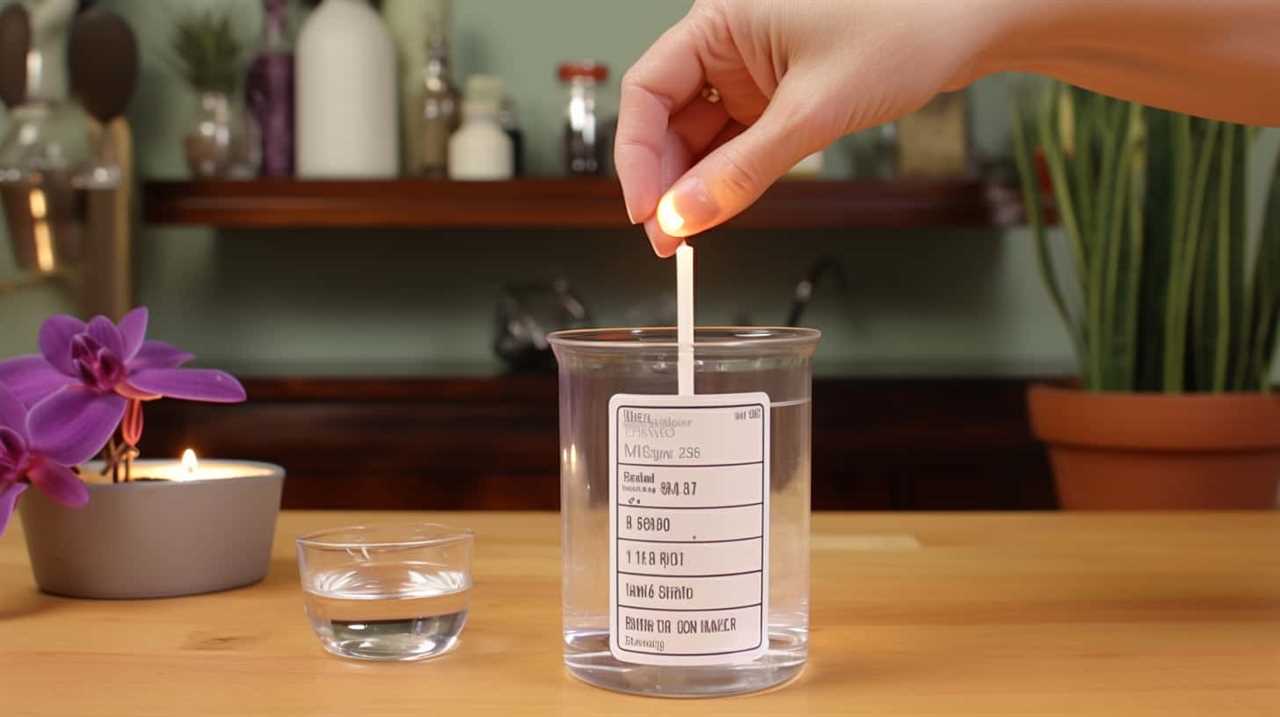
Trimming the wick also prevents excessive smoke, which can mask the scent and diminish the overall experience.
Extend Burn Time
When it comes to extending the burn time of a candle, there are several important points to consider.
First, cutting the wick prevents uneven burning, ensuring that the candle lasts longer.
Additionally, a trimmed wick reduces smoke and soot, creating a cleaner and more efficient burn.

Lastly, by keeping the wick at the recommended length, you maximize the release of fragrance, allowing you to enjoy the scent for a longer period of time.
Prevents Uneven Burning
Regularly trimming the wick of a candle promotes even burning and extends its burn time. When a candle burns unevenly, it can lead to unsightly tunneling, where the wax burns down the center, leaving a thick wall of wax around the edges. This not only affects the aesthetics of the candle but also reduces its burn time. By trimming the wick to the recommended length of about ¼ inch, the flame burns steadily and evenly, allowing the wax to melt and burn uniformly. This helps prevent tunneling and ensures that the candle lasts longer, providing more hours of beautiful illumination. To visualize the importance of wick trimming, refer to the table below:
| Untouched Wick | Trimmed Wick |
|---|---|
| Uneven burning, tunneling | Even burning, extended burn time |
| Diminished aesthetics | Improved aesthetics |
| Shorter burn time | Longer burn time |
Regular wick trimming is a simple and effective way to enhance the performance and aesthetics of your candles, allowing you to enjoy their warm glow for longer periods.
Reduces Smoke and Soot
To further enhance the performance and longevity of our candles, we can reduce smoke and soot by trimming the wick regularly. By doing so, we not only extend the burn time but also improve air quality and prevent respiratory issues.

Here’s why it’s important to keep the wick trimmed:
- Reduces Smoke: Trimming the wick ensures that it doesn’t burn too long, preventing excessive smoke production. This not only keeps the air clean but also prevents any respiratory discomfort caused by inhaling the smoke.
- Reduces Soot: A long, untrimmed wick can produce excess soot, which can stain surfaces and decrease the overall aesthetic appeal of your space. By regularly cutting the wick, we can minimize the amount of soot produced, keeping our candles cleaner and fresher for longer.
Maximizes Fragrance Release
By trimming the wick of a candle, we can maximize fragrance release and extend the burn time. Trimming the wick to about 1/4 inch before each use ensures a controlled and steady flame, allowing the fragrance to disperse evenly and last longer. This simple step not only maximizes fragrance longevity but also improves candle aesthetics.
When the wick is too long, it can create a larger flame that burns through the wax quickly, resulting in a shorter burn time and less fragrance release. A well-trimmed wick prevents black soot from forming on the edges of the container and keeps the flame from flickering or smoking.
Maintain Flame Height
To maintain the flame height of a candle, there are two key points to consider.
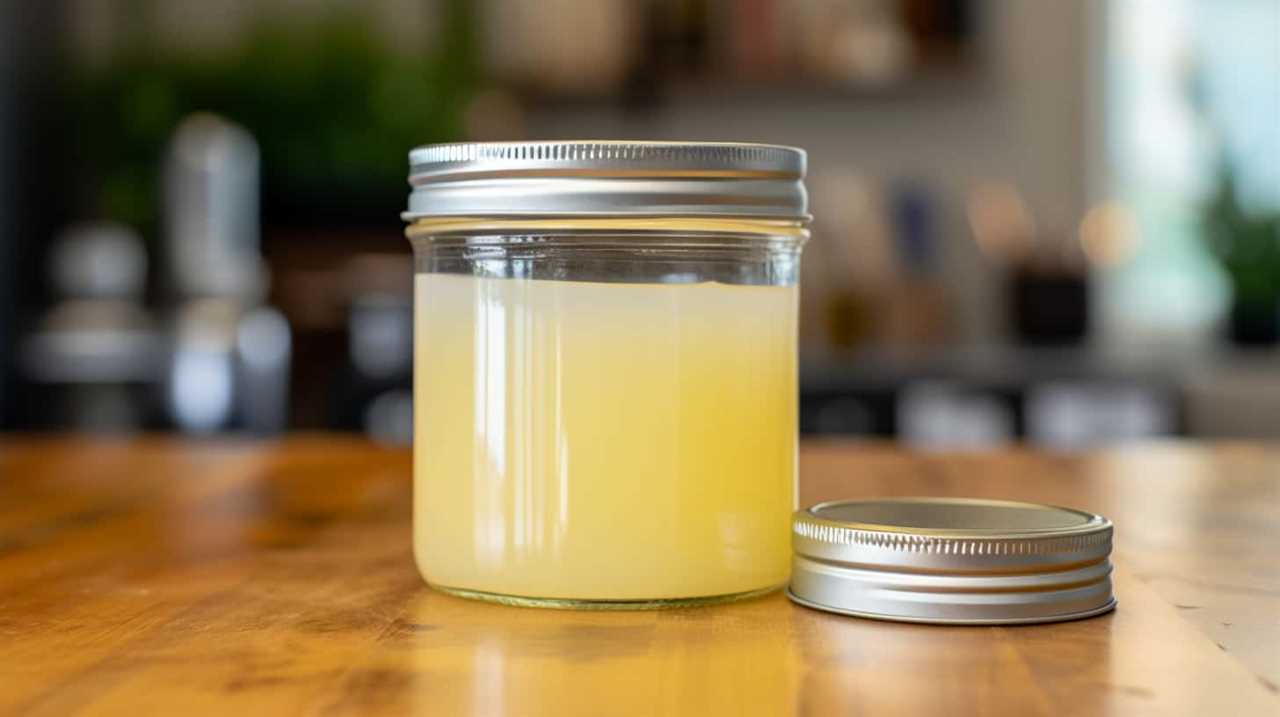
First, trimming the wick helps to prevent the flame from becoming too large and potentially causing a fire hazard.
Second, a properly trimmed wick allows the candle to burn more slowly and evenly, resulting in a longer burning time.
Safety and Fire Prevention
Maintaining a safe flame height is essential for fire prevention when using candles, which involves regularly cutting the wick. Proper flame management and candle maintenance play a crucial role in ensuring a safe and enjoyable candle experience.
Here are two reasons why maintaining a safe flame height is important:

- Prevents accidents: Keeping the flame at an appropriate height reduces the risk of accidents, such as tipping over the candle or igniting nearby objects. This helps protect your home and loved ones from potential fire hazards.
- Avoids excessive smoke: Trimming the wick helps control the amount of smoke produced by the candle. Excessive smoke can be irritating to the respiratory system and can also leave behind unpleasant odors in your living space.
By maintaining a safe flame height, you can create a cozy and secure ambiance while minimizing any potential risks.
Now, let’s explore how trimming the wick can also contribute to a longer burning time.
Longer Burning Time
Achieving a longer burning time for your candle involves properly managing the flame height. By maintaining the flame at an optimal level, you can increase the efficiency of the candle and ensure it burns for a longer period.
To do this, it’s important to regularly trim the wick to a recommended length of about ¼ inch. This prevents the flame from becoming too large or flickering excessively, which can lead to uneven burning and wasted wax.

By keeping the flame at a controlled height, you not only extend the burning time of your candle but also promote even melting and minimize soot production. This simple act of candle maintenance can greatly enhance your candle’s performance and ensure its longevity.
Now, let’s move on to the next section about how to increase candle safety.
Increase Candle Safety
Ensuring candle safety is paramount for a peaceful and worry-free ambiance. To increase fragrance and prevent accidents, here are some important safety measures to consider:
- Keep candles away from flammable materials:
- Place candles on a sturdy, heat-resistant surface.
- Keep them at least 12 inches away from curtains, furniture, and other combustible items.
- Trim the wick:
- Cut the wick to ¼ inch before lighting the candle.
- This helps control the flame size and reduces the risk of the candle overheating or causing a fire.
Following these simple steps won’t only enhance the fragrance of your candles but also provide a safe environment for you and your loved ones. Remember, a little precaution can go a long way in creating a calming and worry-free atmosphere.

Promote Even Wax Melting
To ensure even wax melting, we need to consistently monitor the candle’s burn time and adjust the wick as necessary. By trimming the wick, we can enhance the wax melting efficiency and improve the overall performance of the candle. When the wick is too long, it can create a larger flame that burns the wax unevenly, resulting in wasted wax and an inconsistent burn. Trimming the wick to the recommended length of about ¼ inch helps the candle burn evenly, maximizing its wax melting efficiency. This not only ensures a longer burn time but also reduces the risk of tunneling, where the wax around the edges of the candle remains unburned. By promoting even wax melting through wick trimming, we can enjoy a longer-lasting and more efficient candle experience.
To reduce soot build-up, let’s explore the next subtopic.
Reduce Soot Build-Up
To decrease the amount of soot emitted, we diligently maintain a trimmed wick throughout the candle’s burn time. By reducing soot build-up, we can contribute to a cleaner and healthier environment. Here’s why trimming the wick helps:
- Reduce carbon emissions
- Trimming the wick prevents excessive burning, which reduces the release of carbon into the air.
- This helps minimize your carbon footprint and contributes to a more sustainable future.
- Improve air quality
- When a candle burns with a long, untrimmed wick, it produces more soot particles that can pollute the air.
- By keeping the wick trimmed, you can minimize the amount of soot released, improving the air quality in your home.
Achieve a Cleaner Burn
For a cleaner burn, we need to focus on maintaining a trimmed wick throughout the candle’s burn time. By doing so, we can increase candle longevity and improve air quality.

When the wick is too long, it can produce excessive smoke and soot, which can stain walls, ceilings, and furniture. Trimming the wick to about 1/4 inch before each burn ensures a more even and controlled flame, reducing the risk of smoke and soot. This not only keeps the candle burning cleaner but also extends its lifespan.
Additionally, a cleaner burn means less harmful particles are released into the air, leading to improved air quality in your home. So, remember to regularly trim the wick for a cleaner and healthier candle experience.
Frequently Asked Questions
How Often Should I Trim the Wick of My Candle?
We trim the wick of a candle regularly to ensure proper burning. It helps the candle last longer, prevents excessive soot, and promotes a clean, steady flame. Regularly trimming the wick is key for a well-maintained candle.
Can I Use Any Type of Scissors or Trimmers to Cut the Wick?
Yes, you can use any type of scissors or trimmers to cut the wick of a candle. However, it’s important to regularly trim the wick to maintain an optimal length for a clean and even burn.

What Is the Recommended Length to Trim the Wick?
We trim the wick of a candle to maintain a proper length and ensure a clean, even burn. The recommended frequency for wick trimming is before each use, and the proper length is about 1/4 inch.
Is It Necessary to Trim the Wick Every Time Before Lighting the Candle?
Yes, it is necessary to trim the wick before lighting the candle. Trimming the wick promotes better burning, ensuring a steady flame and preventing excessive smoke. It also improves candle performance and safety.
Can I Use the Candle Without Trimming the Wick?
Sure, you can use a candle without trimming the wick, but it’s not recommended. Proper wick maintenance is crucial for a clean and safe burn. Trimming the wick helps prevent excessive smoke, soot, and uneven burning.
Conclusion
Cutting the wick of a candle is a small act with big benefits. Like a skilled conductor, it orchestrates a symphony of advantages.

By preventing excessive smoke, enhancing scent distribution, and extending burn time, it ensures a harmonious experience. Additionally, it maintains flame height, increasing safety, and promotes even wax melting, reducing soot build-up.
In the end, this simple act allows the candle to burn cleanly, illuminating our surroundings with its gentle glow.

